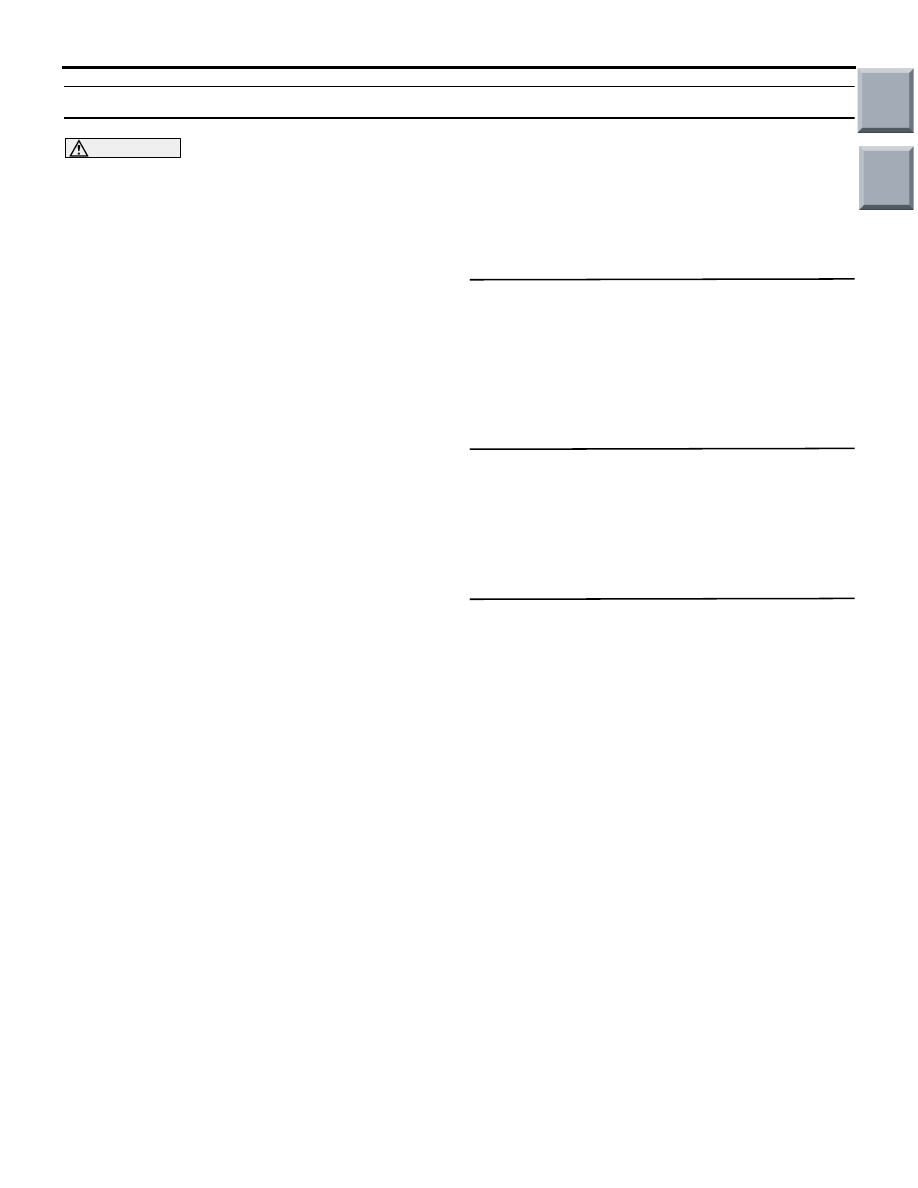Mitsubishi Colt Ralliart. Manual - part 634

TROUBLESHOOTING
ACTIVE STABILITY CONTROL SYSTEM (ASC)
35C-81
Code No. U1105: G and yaw rate sensor CAN time-out error
CAUTION
If there is any problem in the CAN bus lines, an
incorrect diagnosis code may be set. Prior to this
diagnosis, always diagnose the CAN bus lines.
DIAGNOSIS CODE SET CONDITIONS
ASC-ECU receives the steering angle-related sig-
nals from the G and yaw rate sensor via the CAN bus
lines. When these signals cannot be received, the
diagnosis code No. U1105 is stored.
COMMENTS ON TROUBLE SYMPTOM
Current trouble
• The connector(s) or wiring harness in the CAN
bus line between ASC-ECU and the G and yaw
rate sensor may be damaged, or the G and yaw
rate sensor power supply circuit or ASC-ECU
may be faulty.
Past trouble
• If diagnosis code No. U1105 is stored as a past
trouble, carry out diagnosis with particular
emphasis on connector(s) and wiring harness in
the CAN bus line between the ASC-ECU and the
G and yaw rate sensor, and the G and yaw rate
sensor power supply circuit. For diagnosis proce-
dures, refer to How to treat past trouble (refer to
GROUP 00, How to Use Troubleshooting/Inspec-
tion Service Points
NOTE: For a past trouble, you can not find it by the
M.U.T.-III CAN bus diagnostics even if there is
any failure in CAN bus lines. In this case, refer to
GROUP 00
−
How to Use Troubleshoot-
and check
the CAN bus lines. You can narrow down the
possible cause of the trouble by referring to the
diagnosis code, which is set regarding the CAN
communication-linked ECUs. (Refer to GROUP
54D
−
CAN Bus Line Diagnostic Flow
.)
Probable causes
• G and yaw rate sensor malfunction
• ASC-ECU malfunction
• Damaged wiring harness and connectors
DIAGNOSTIC PROCEDURE
STEP 1. M.U.T.-III CAN bus diagnostics
Use the M.U.T.-III to diagnose the CAN bus lines.
Q: Is the check result normal?
YES :
Go to Step 3.
NO :
Repair the CAN bus lines. (Refer to GROUP
54D
completion, go to Step 2.
STEP 2. Diagnosis code recheck after resetting
CAN bus lines
Q: Is the diagnosis code No. U1105 set?
YES :
Replace the G and yaw rate sensor, and
then go to Step 3.
NO :
This diagnosis is complete.
STEP 3. Diagnosis code recheck
Recheck if the diagnosis code is set.
(1) Erase the diagnosis code.
(2) Ignition switch: LOCK (OFF) position
(3) Ignition switch: ON
Q: Is the diagnosis code No. U1105 set?
YES :
Replace the ASC-ECU.
NO :
Intermittent malfunction (Refer to GROUP
00
− How to Cope with Intermittent
.)
Main
Index
Group
TOC